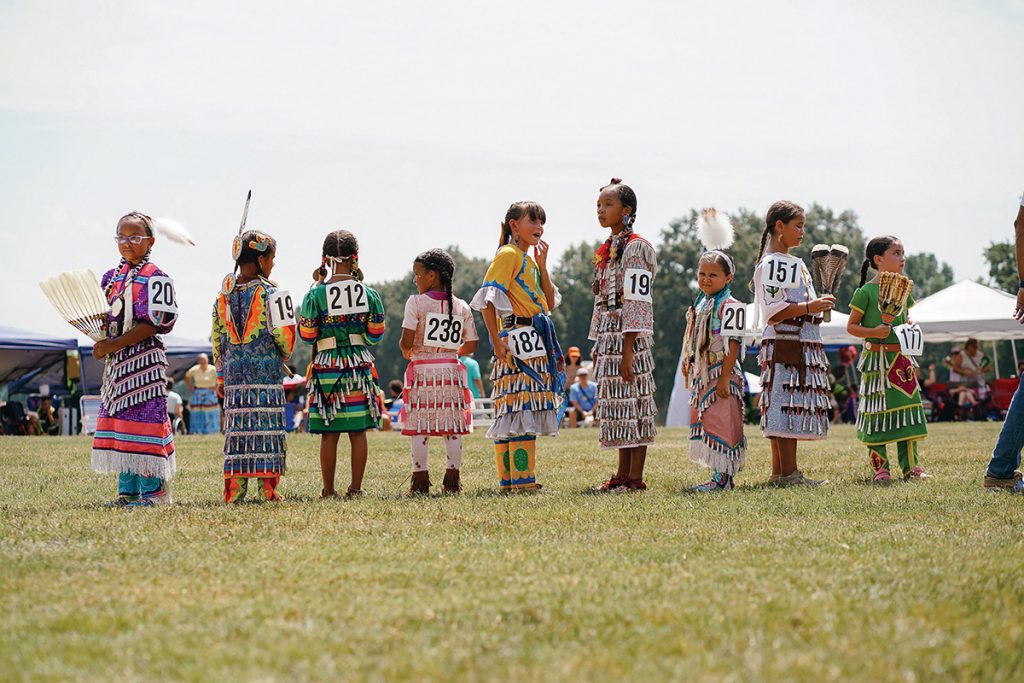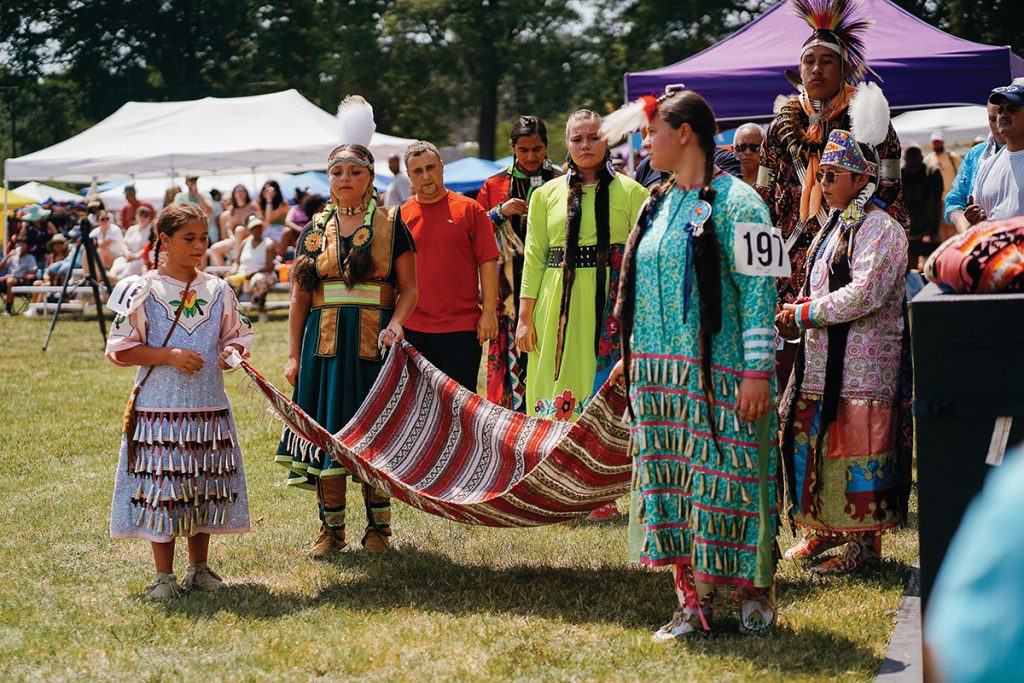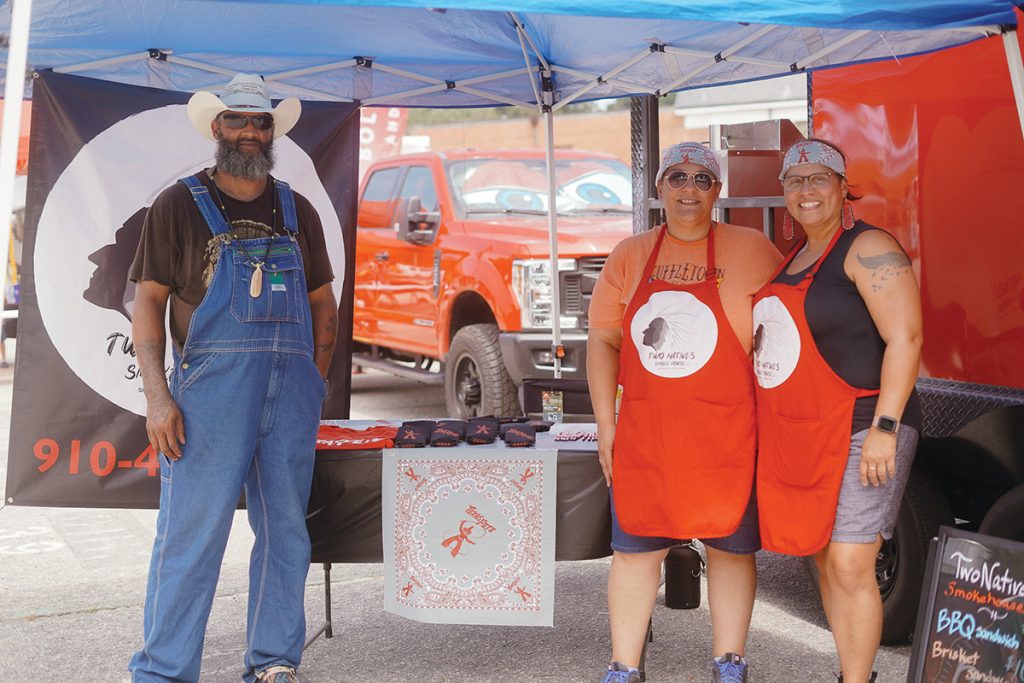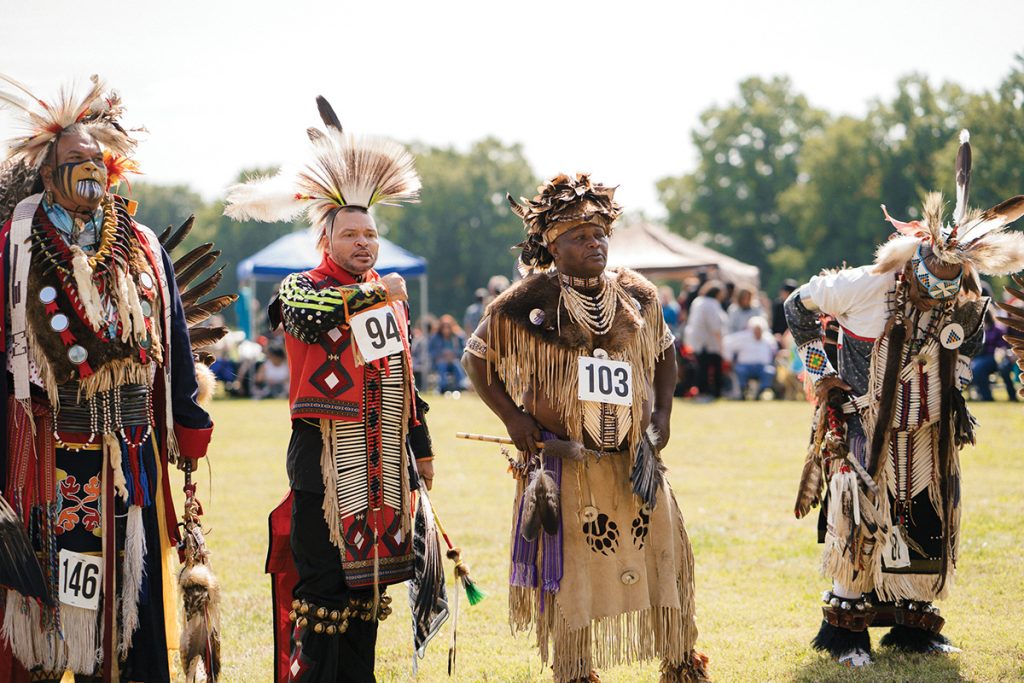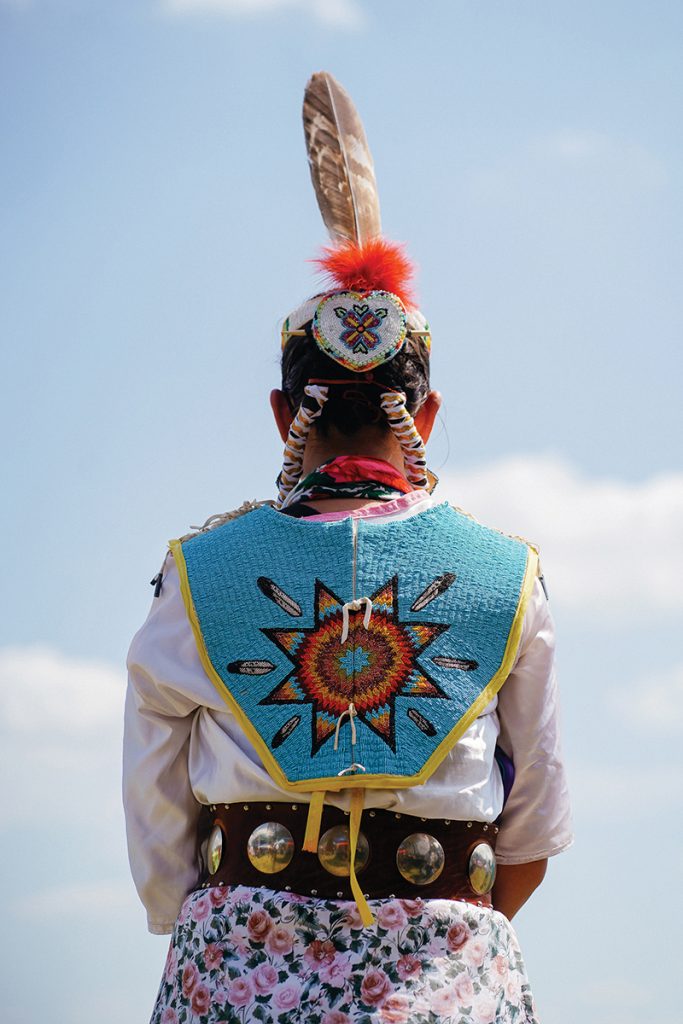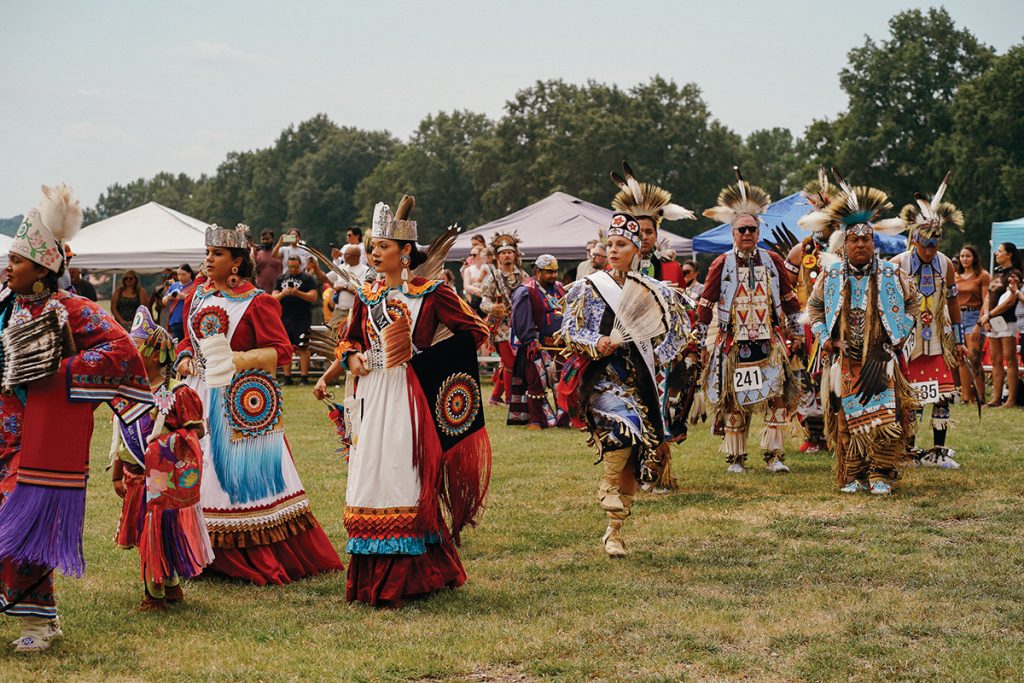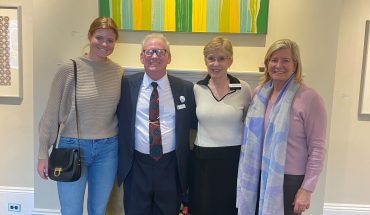This annual cultural celebration recognizes the deep ancestral connection that Native American have to the downtown Raleigh park.
by Lori D. R. Wiggins | photography by Alexandra Williams
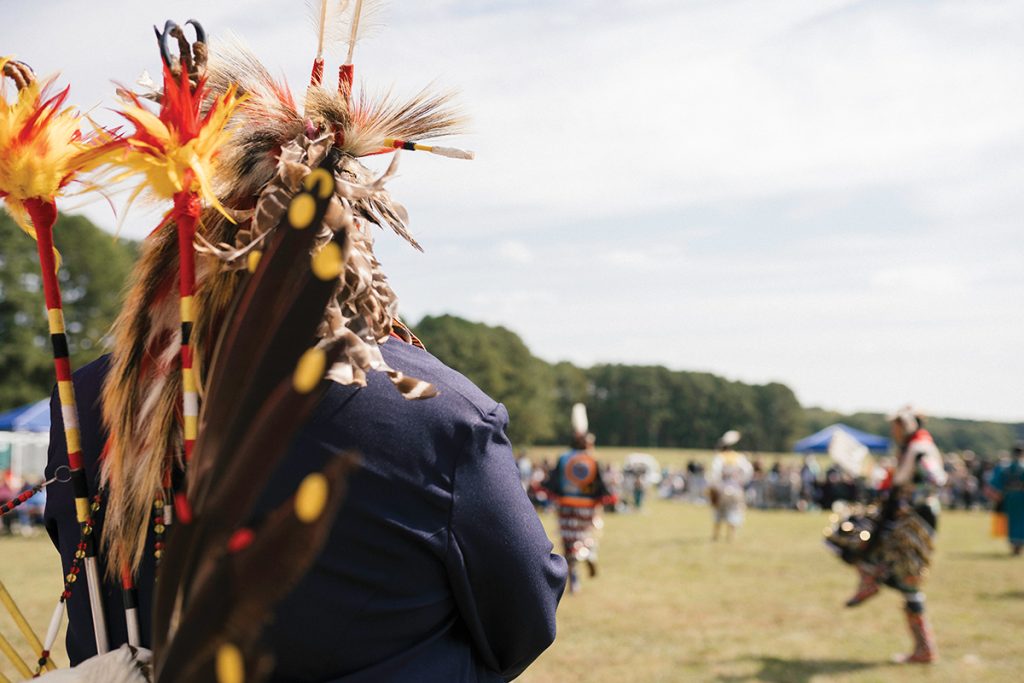
For thousands of years, the land at Dorothea Dix Park was a place where Native Americans gathered with family, shared food and engaged in healing, ceremony, stewardship and justice. Raleigh is itself on the border of Native American Tuscarora and Siouan territory, and the land at Dorothea Dix Park is recognized by the City of Raleigh as the land of the Coharie, Cherokee, Haliwa-Saponi, Lumbee, Meherrin, Occaneechi, Sappony and Waccamaw-Siouan peoples.
But as European settlers moved into this area and took over in the last 500 years, much of this cultural history has been lost. The Dix Park Inter-Tribal Pow Wow is an event to recognize and celebrate this ancestral connection to the land.
In August 2020, Raleigh held its first-ever Native Land Blessing & Acknowledgement Ceremony at Dix Park, formally recognizing Indigenous people as the original guardians of the land, as well as their ongoing connection to those traditional territories. The ceremony was held in partnership with the Triangle Native American Society and the nonprofit Dix Park Conservancy. In November 2021, Dix Park hosted its first Inter-Tribal Pow Wow, a day filled with competition dancing, music, vendors and other activities that showcase the legacy and culture of Indigenous communities who still make North Carolina home today. On May 18, it will host the Pow Wow for the fourth time.
“Demonstrating the vitality and strength of the NC Indigenous culture holds immense significance for us,” says Trey Roberts, the community engagement manager at the Dix Park Conservancy and a member of the Haliwa-Saponi Tribe, commonly from Hollister. “We celebrate because for a long time it was illegal for us to sing, dance and show our culture. It’s a way to stay connected.”
Helping plan the Pow Wow is Sandon Jacobs, a member of the Waccamaw-Siouan Tribe and who will act as master of ceremonies this year. “The Pow Wow is important to raise awareness to the fact there are still Native American people here in Raleigh,” Jacobs says. “We walk around invisible, yet in plain sight, because too many don’t recognize the Native culture and the Native history of this state.”
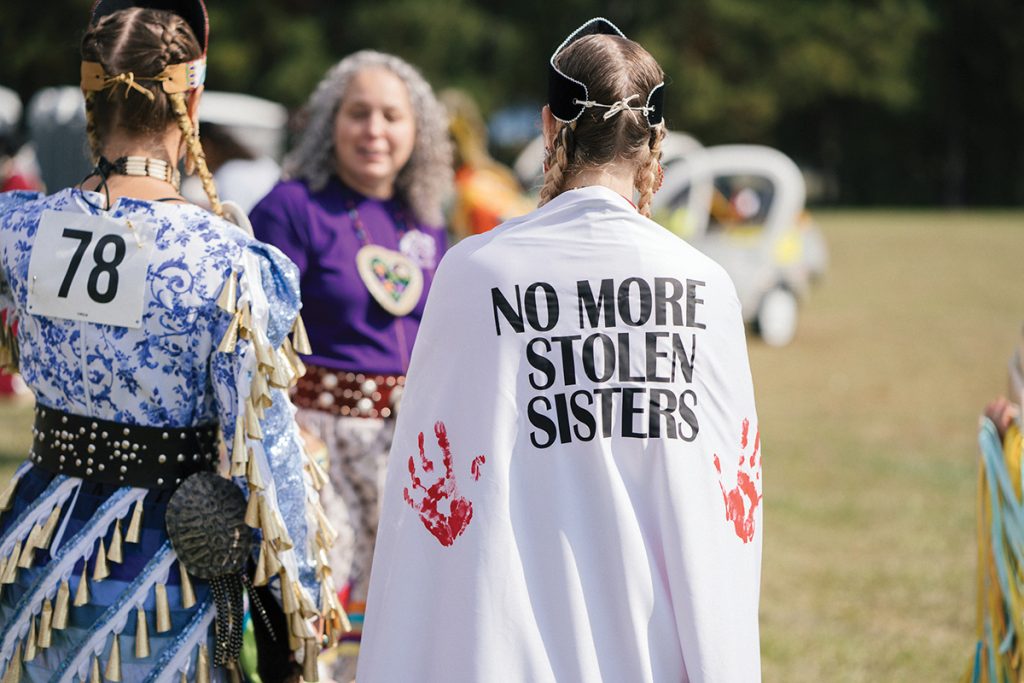
For three decades, Jacobs himself has traveled the country and Canada, visiting Native communities as a pow wow singer and event MC. “We’re here — contemporary Native Americans who work as doctors, CPAs, lawyers, teachers, who still celebrate who we are and keep our traditions like our songs and dances,” he says.
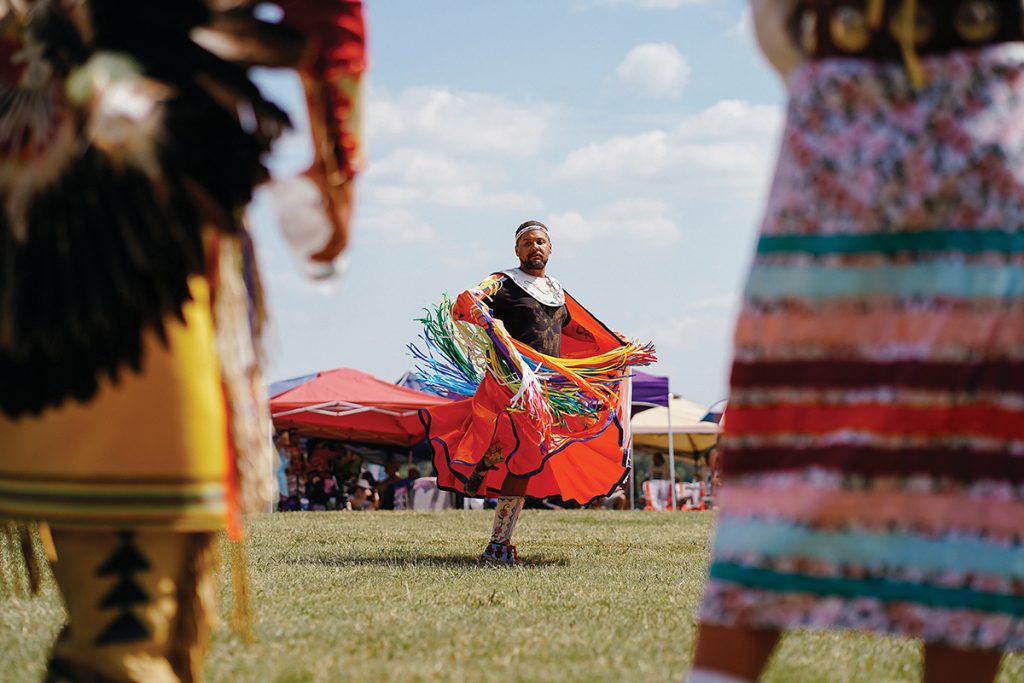
The Dix Park Inter-Tribal Pow Wow will start with the Grand Entry, a procession of dancers that starts from the east to mimic the rising sun. The dancing competition takes place within a central dance circle, a symbol of the cycle of life and its continuing connection to all things. Often moving clockwise around the circle in the direction of the sun, male and female dancers of all ages and from various nations showcase skills with the signature moves of various styles of dance. Witness the slow, bounce-step dipping and swaying of the Women’s Traditional Dance, with dancers in regalia of buckskin, moccasins, medallions, breastplates, bones and beads. It’s a stark contrast to the Men’s Fancy Dance, an active and athletic style of intricate footwork in rhythm with the beat of the drum, with regalia featuring brilliantly colored feathers.
Many of the dances represent lessons and beliefs of cultural significance, from gratitude to spirits for a bountiful harvest or successful hunt to honoring life transitions. The Jingle Dress Dance, for example, is honored as a gift of healing from the Creator to the Ojibwe Tribe, one of the largest groups of American Indians north of Mexico. The dance practice has been adopted by other tribes and become a shared tradition that has endured generations. The Jingle dress features several rows of cones made of noise-making material such as bones, deer hooves or repurposed metal. Jingle Dress Dance regalia also can include decorations of ribbon, beadwork, feathers, hair ornaments and moccasins. A hand-fan is raised during the louder beats of the drum.
The head dancers at this year’s Dix Park Pow Wow are newlyweds Stevie Lowry-Leviner and Nakya Leviner, both members of the Lumbee Tribe. Their engagement happened during the 2022 Lumbee Dance of the Spring Moon Pow Wow at the end of a Smoke Dance, which includes a proposal as part of the dance that Nakya made real.
Both 22 — the children of best friends who were pregnant at the same time — the couple have danced pow wows since they can remember. “I didn’t walk first, I danced first,” Nakya quips. “We look at it as a way of life. As Native people, we walk in two worlds; a world of everyday reality, with every other person in society, but we also have a way of life as Native American people, a traditional life.” They’ve danced all over the country and in Canada, sharing culture and tradition. Nakya has danced in all 50 states.
At Dix, Nakya will dance the Men’s Traditional Dance, a ceremonial dance originated by the Omaha Tribe to describe the story of warriors, making its dancers “the warriors of the pow wow movement.” The dancers wear front and back breechcloths, as well as bustles on their backs to represent the battlefield. Stevie will dance the Women’s Fancy and Women’s Jingle Dress Dances. Although she’s danced the Fancy the majority of her life, the Jingle feels particularly important now. “I feel most connected to the Women’s Jingle dance because of the meaning behind it: healing,” she says. “I have a sick grandma and I feel like every time I dance Jingle, I’m doing something to help her get better.”
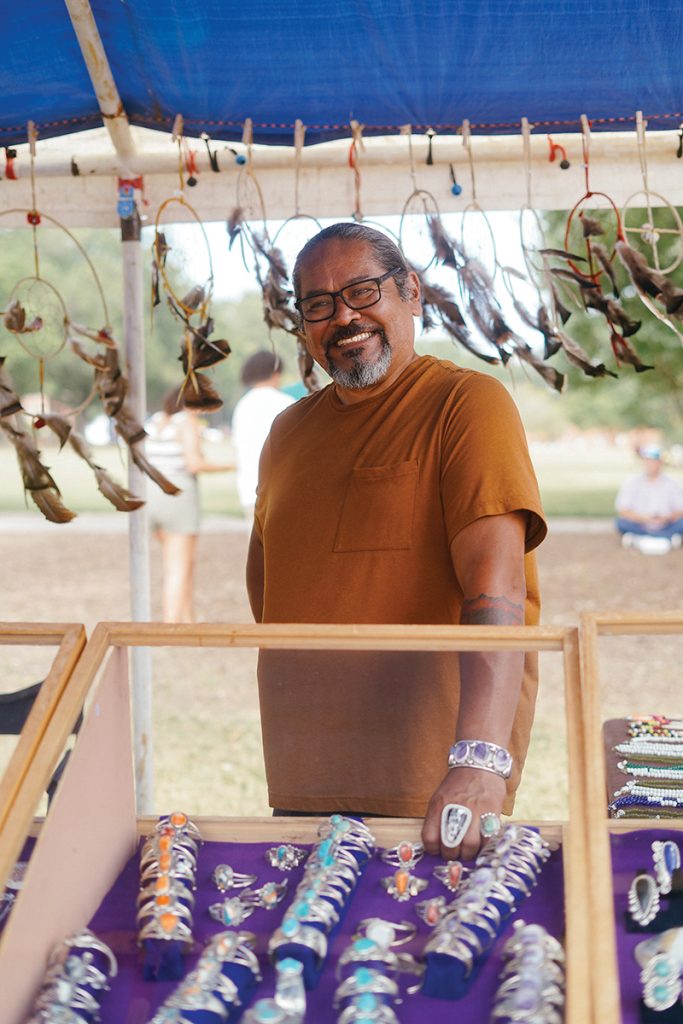
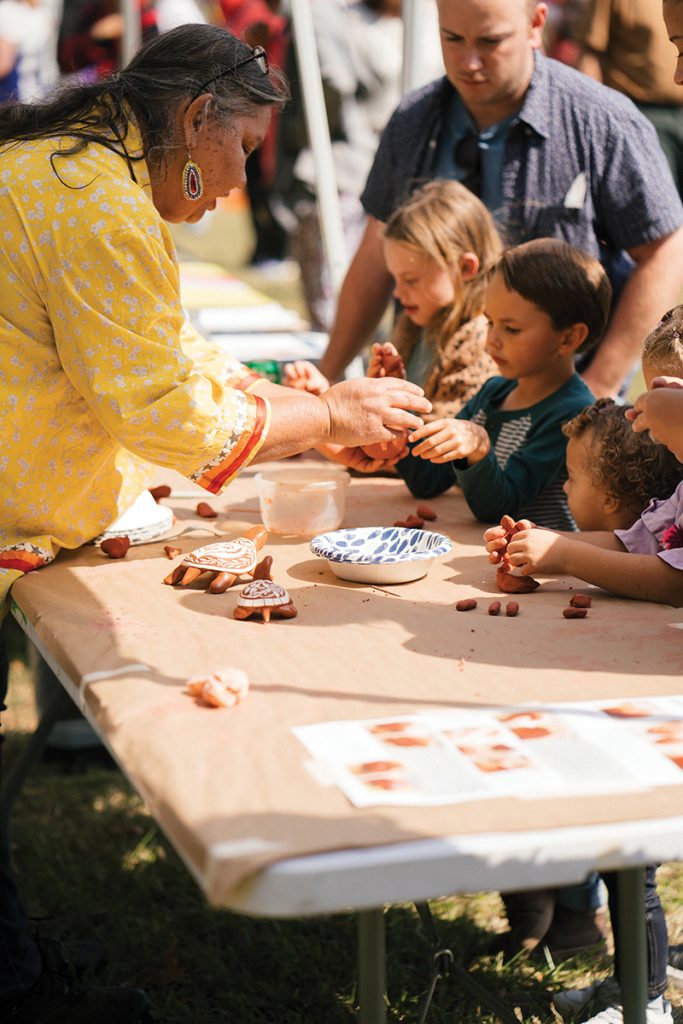
Jeweler and artist Antonio Grant of the Eastern Band Cherokee and Diné tribes (left). Artist Senora Lynch, a member of the Haliwa-Saponi Tribe (right).
The couple also hold dear essential lessons, from Nakya learning early on to honor the eagle feathers on bustles as he would fallen warriors, to Stevie, whose brother now makes bustles for pow wow wear, learning not to frolic in pow wow regalia. These days, the regalia often includes both original “old-style” and contemporary pow wow fashions, which can include newer materials now available and old-style choices such as deer toes.
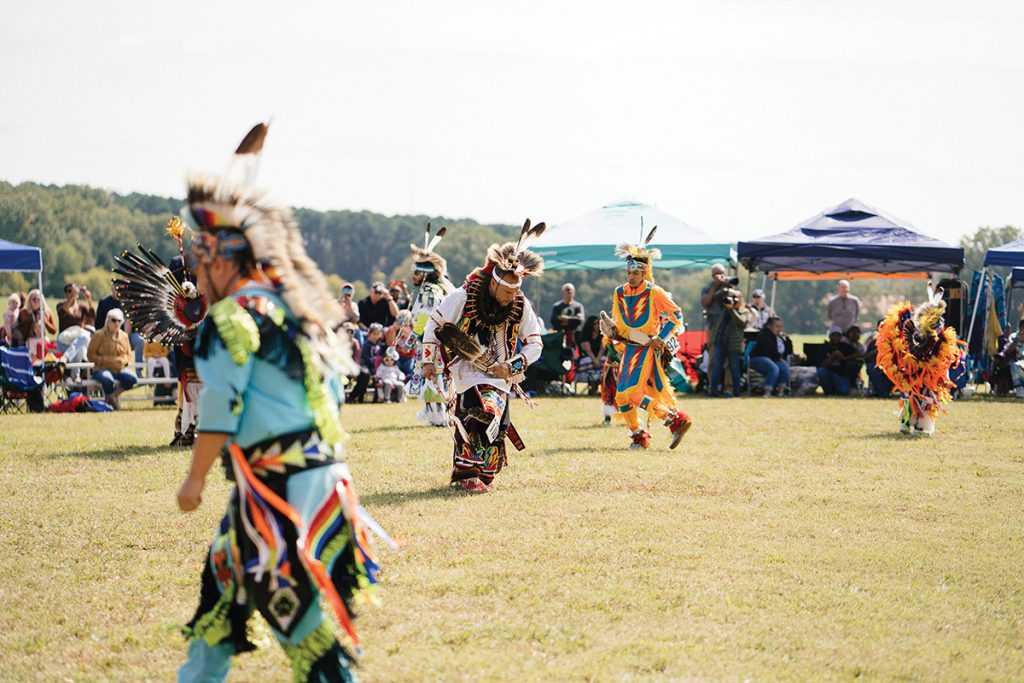
“We hold our outfits to a high standard and we take care of them,” Stevie says. “The regalia is a representation of yourself, just like the dance you dance.”
Roberts and Jacobs hope that visiting the Inter-Tribal Pow Wow will spark guests of all backgrounds to embark on a journey of discovery. “There are resources here to learn so much more about the history of our culture and our tribes,” Jacobs says, pointing to a wealth of information available through organizations such as the Triangle Native American Society, the NC American Indian Heritage Commission and the NC Indian Affairs Commission. “Hopefully, people come away with a curiosity to dig deeper.”
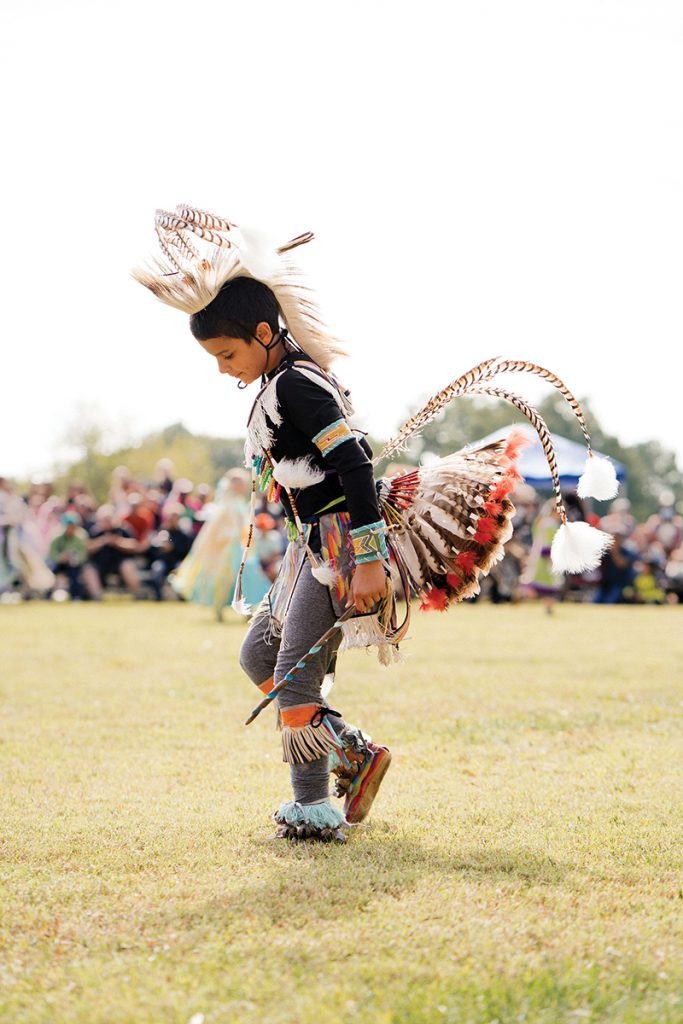
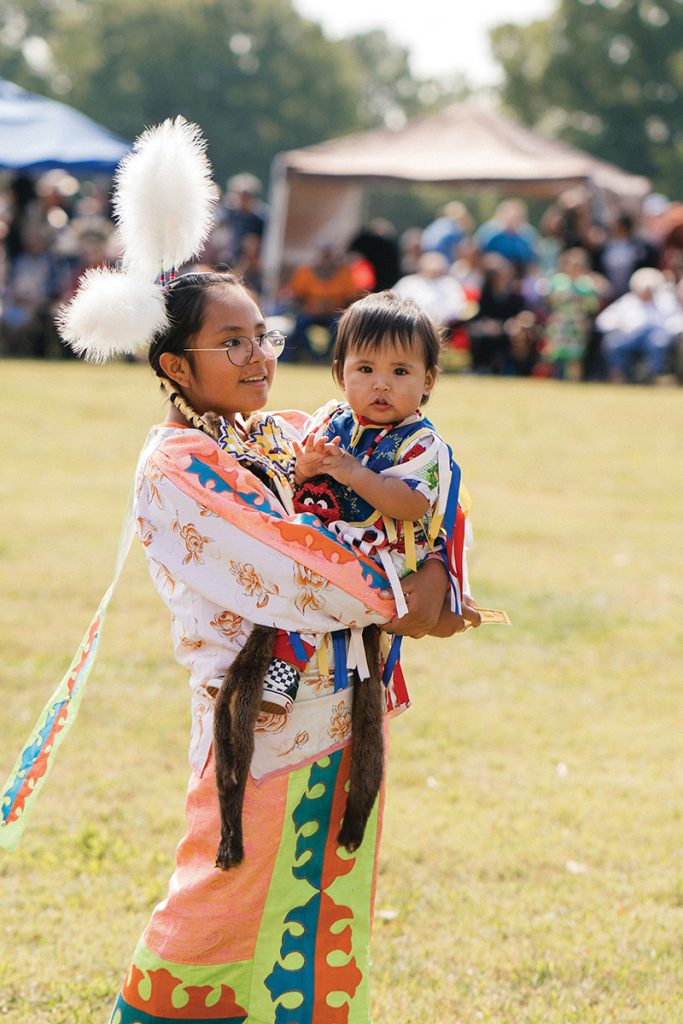
This article originally appeared in the May 2024 issue of WALTER magazine.

